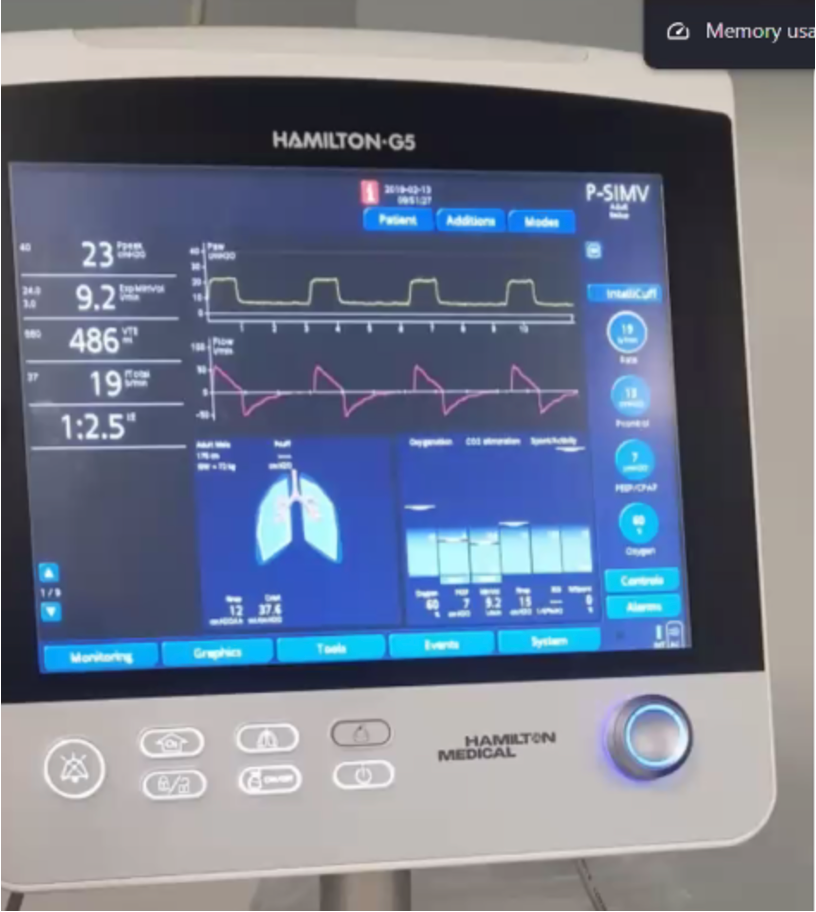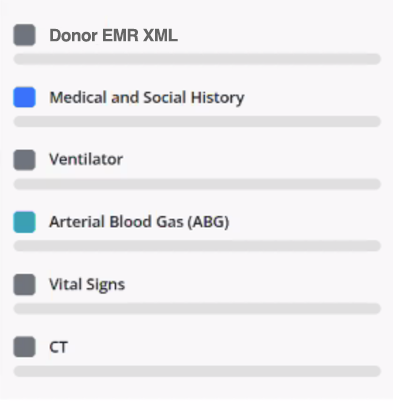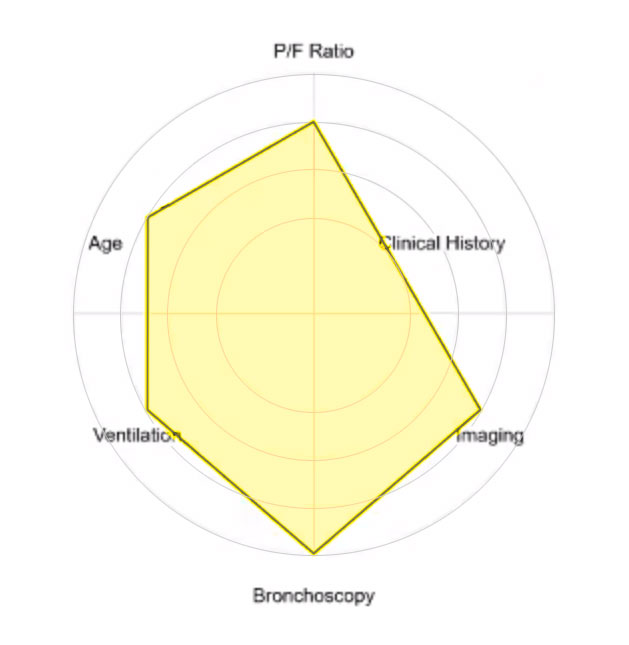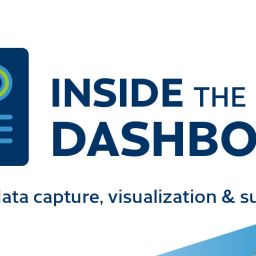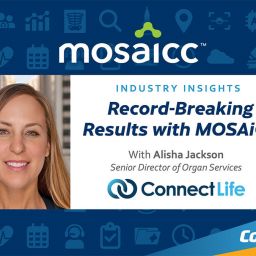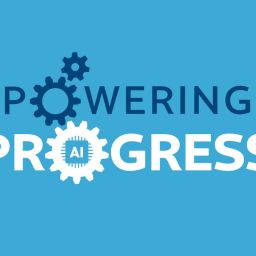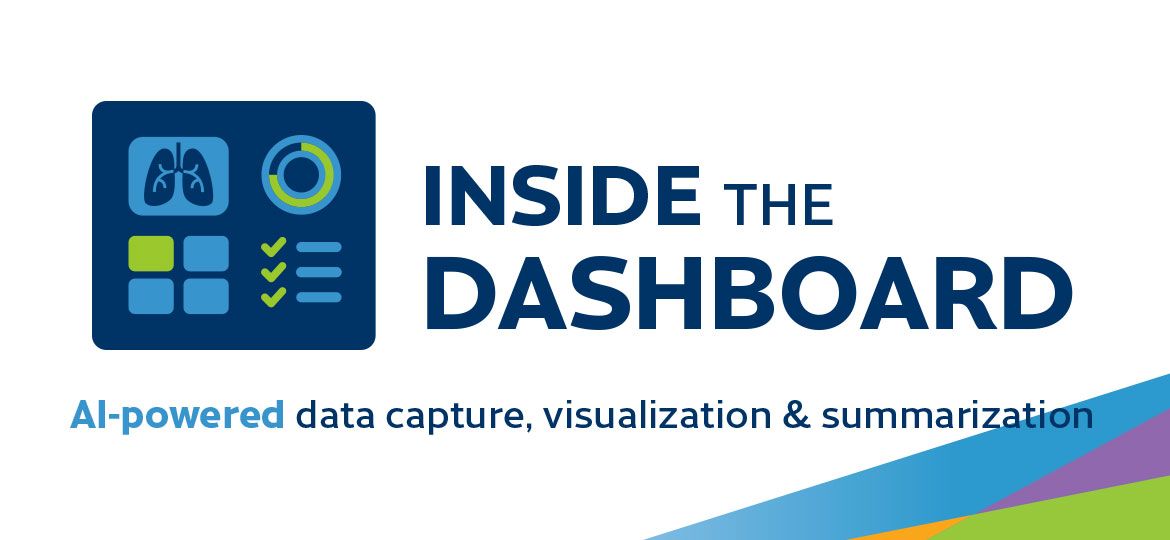
This post is part of a four-part series exploring how OPOs are using CompuMed’s AI-powered data capture, visualization and summarization innovation to improve lung donor management. Each blog highlights a different way this first-of-its-kind tool helps the right information reach the right decision-makers in real-time. In this installment, we take a closer look at the platform’s data capture capabilities and how they’re designed to reduce delays, eliminate noise and build trust in the data.
In today’s donation and transplantation landscape, transplant centers are often drowning in data and starving for information – a phrase Lee Keddie, CompuMed’s president and CEO, emphasized during a standing-room-only breakout session at the 2025 AOPO Annual Meeting. “It’s been obvious they need more relevant information, and they need less irrelevant information,” he said. “The information needs to be transplant specific, and it needs to be verifiable, where they can drill down to the source, because a lot of it is about trust.”
That’s where CompuMed’s lung dashboard innovation comes in. Designed to support real-time decision-making through data capture, consolidation and visualization tools, the dashboard allows OPOs to gather clinical data at its source and organize it in a way that is contextual, verifiable and actionable for OPO decision-makers such as medical directors, AOCs and consulting sub-specialists.
A New Approach to Donor Lung Management
As Lee and his co-presenters explained, the dashboard is a first-of-its-kind, AI-powered platform developed initially with a focus on improving lung donor management. Its features include:
- Secure, versatile data capture: via mobile photos, direct uploads, screencasts and more
- Customizable lung evaluation checklist: to standardize the information collected
- Data progress indicators: so coordinators can easily confirm all required data has been submitted
- Real-time AI summaries: to highlight donor characteristics and a timeline of donor management
Four Ways to Upload. One Source of Truth.
During the AOPO session, June Delisle, clinical educator at the Center for Donation and Transplant (CDT) of New York, walked attendees through the platform’s data capture tools and how they helped her team streamline the donor chart-building process.
The platform currently supports four pathways for uploading data:
- Direct upload from a diagnostic device
- Mobile upload using a secure QR code and photo capture app
- Screencast recording to walk through donor records
- Screen capture for specific chart elements or diagnostic views
Importantly, no images are stored on a user’s phone or other mobile device.
“Whatever photo you take will not appear on your phone,” said June. “Yet we can get our data transferred as quickly as possible.”
“This is a HIPAA-compliant tool,” added Lee. “If you’re working with a hospital and you have direct integration, that’s the best way of doing it, of course. But 50% of U.S. hospitals have three donors or fewer a year, and 85% of hospitals have fewer than one a month. So, you’re not going to be able to integrate with a lot of hospitals, and this is a way you can capture and securely share that data.”
Context Is Everything
Regardless of the method used, the tool helps maintain the data in context, a crucial aspect of enabling accurate AI-generated summaries that provide actionable insights.
“When you navigate the platform to your donor case, you can see we have designated ‘buckets’ that we use to add context to the data,” explained June. “AI requires a little bit of guidance. When we upload data from a ventilator, we tag it to indicate that it is a ventilator image. Now AI knows it’s looking for ventilator-specific numbers and information.”
Once the data is captured and tagged, CompuMed’s platform uses intelligent extraction to pull relevant data from the file. From there, the AI synthesizes and summarizes the content, making it ready to review and share with clinical decision-makers.
“It usually takes about 20 seconds for the AI to parse the information out of the files,” said June. “Once it’s complete, you’re able to see the summary on the side.”
Building Confidence Through Visibility
Another benefit of the platform is transparency. Every AI-generated summary links back to the source files, allowing users to verify and explore the data in detail.
“You can actually go to the data – even the vent image if you want,” said Lee. “But you’re not drowning your decision-makers in data. And it’s pretty much instant.”
Verifiability and speed are crucial, especially when timelines are tight and confidence in donor data can make the difference between a transplant and a missed opportunity.
A Tool for Rapid Cases and Time-Critical Decisions
These capabilities become especially valuable in high-pressure scenarios. During one “rapid case” demonstration, June simulated a situation where a potential donor’s family consented to donation only if their loved one went to the OR within four hours.
“In three minutes, we were able to upload basic info, a screen capture of the CT scan and a screen capture of the patient’s vitals,” she said. “AI parsed out the relevant data for us to convey to transplant center partners, who might review this case and say they’re willing to come to the donor – even if we’re still waiting on infectious disease results.”
For aggressive transplant centers, in particular, these early snapshots can help generate interest in a potential donor.
“The most important thing here is that once you have everything up, you’re able to share the donor,” said June. “You don’t have to wait until you have ABO or HLA typing to run a list – or even run a list at all. You can get information to transplant centers this way, and hopefully, save more lives in the process.”
Moving Data, Not People
With CompuMed’s AI-powered donor management innovation, transplant-critical information – whether from ventilators, bedside monitors, or other sources – can be captured in a few clicks or taps and securely shared, without requiring extensive training or additional equipment.
Following intelligent extraction, its real-time AI summaries reduce fragmented communication and streamline decision-making.
As Lee said to kick off the AOPO presentation, “CompuMed is focused on helping improve clinical decision-making by moving data, not people.”
With the ability to capture, extract, synthesize and summarize donor data, this tool can empower OPOs to close the gap between what is and what decision-makers truly want to see.
Ready to see how CompuMed’s donor management dashboard can help your team act fast, with confidence and potentially save more lives in the process? Contact our team to learn more or schedule a demo.


